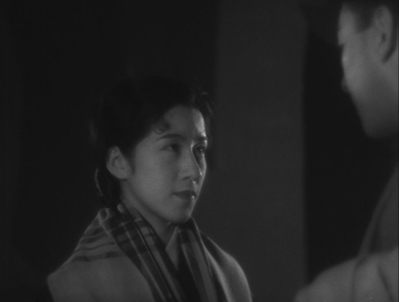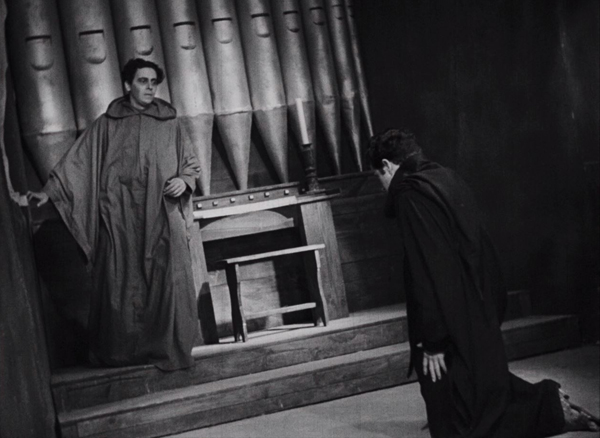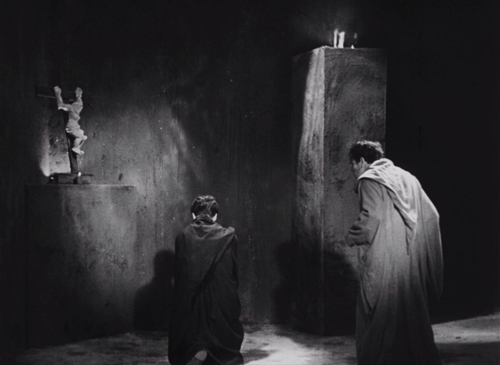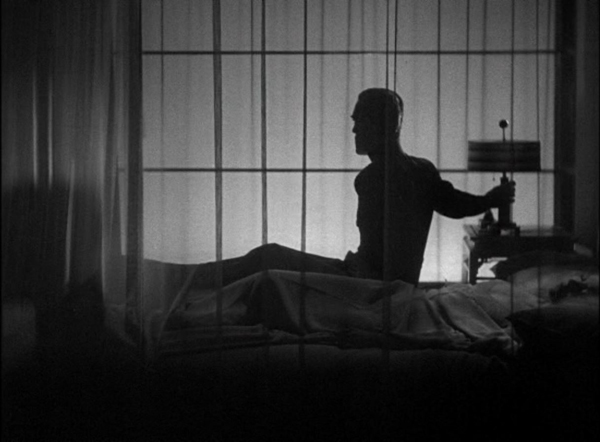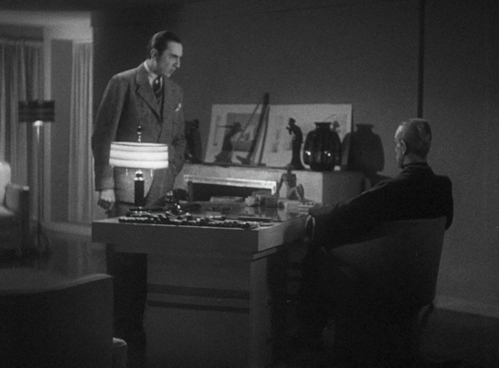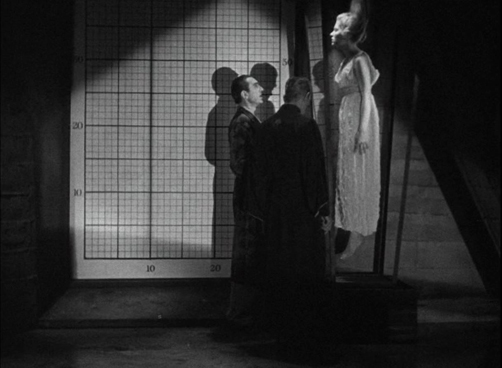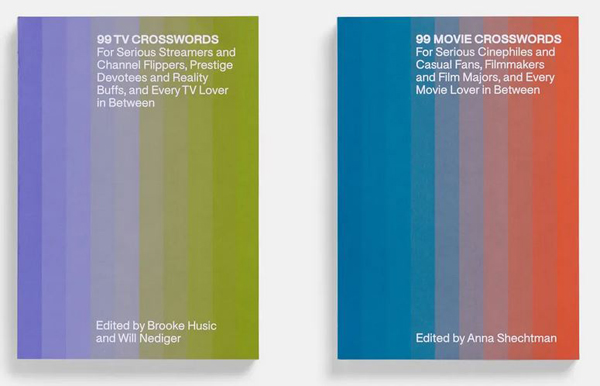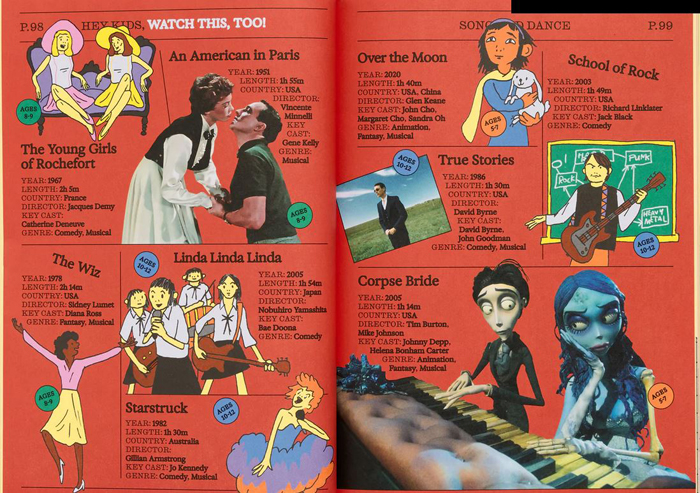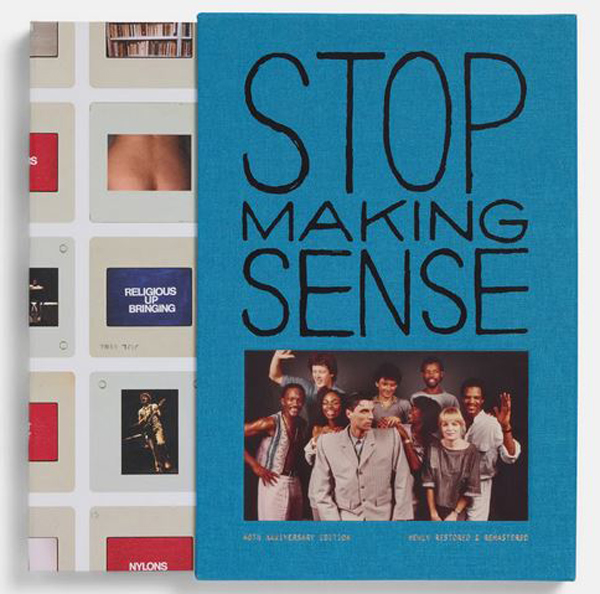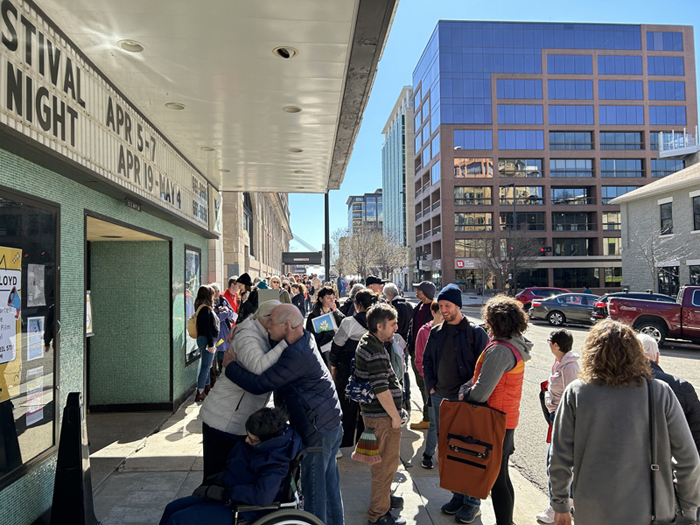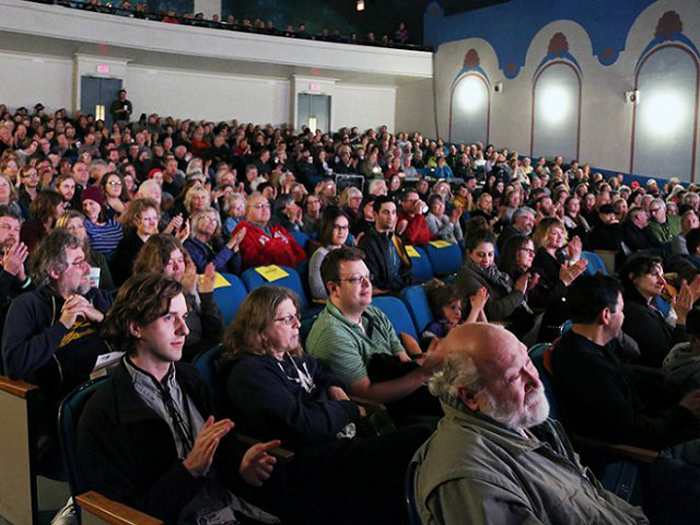Archive for the 'Film comments' Category
The ten best films of … 1934
Story of Floating Weeds (Yasujiro Ozu)
Kristin here:
This surprisingly popular series started with what we assumed to be a one-off entry. In 2007 David and I saluted the birth of the Classical Hollywood Cinema in 1917 as a full-fledged new set of norms that would last until the present day and influence filmmakers around the world. Introducing the list of ten films from ninety years earlier (for the list, click on the 1917 link below), David wrote:
This is the season when everybody makes a list of best pictures. We have stopped playing that game. For one thing, we haven’t seen all the films that deserve to be included. For another, the excellence of a film often dawns gradually, after you’ve had years to reflect on it. And critical tastes are as shifting as the sirocco. Never forget that in 1965 the Cannes palme d’or was won by The Knack . . . and How to Get It.
Still, enough time has elapsed to make us feel confident of this, our list of the best (surviving) films of 1917, both US and “foreign-language.”
That notion of time elapsing became the somewhat risible rationale for our series: surely ninety years is enough that one can be confident in one’s choices of old films worth watching and rewatching.
David ended that first entry, “Next year, maybe we’ll draw up our list for 1918.” This is our eighteenth such list. I took the initiative to follow up and have written all the entries–consulting with David each time, of course. This is my first time without his advice, though I know there are films on this new list with which he would have heartily agreed, others that he would agree are important enough to include, and one or two that he would be dubious about.
Previous lists can be found here: 1917, 1918, 1919, 1920, 1921, 1922, 1923, 1924, 1925, 1926, 1927, 1928, 1929, 1930, 1931, 1932, and 1933.
As in the past, I begin the process of choosing the ten films to included thinking that this year will be the one where there are ten obvious choices. During the transition to sound, the pickings have sometimes been slim, and in recent years I have filled in with one or two films that don’t quite stand up to the others in the final list. I had high hopes for 1934, but again I have had trouble deciding on a film to fill the final slot. As the 1930s progress, I am confident that it will be considerably easier to think of titles to make the list. Renoir will enter the height of his career, Mizoguchi’s films start surviving, Ozu maintains his high level until the war intervenes, and so on.
L’Atalante (Jean Vigo)
L’Atalante is surely one of the first films one would think of when asked to name great classics from 1934. Vigo made a couple of shorts, but his high reputation is based on only two films, Zéro de conduite and this one. Zéro was on my 1933 list. It’s a strange combination of surrealism, slapstick, magical realism, and bitter satire.
L’Atalante is none of these, really, but instead a poetic romance played out on a canal barge, the name of which gives the film its title. It begins just after the wedding of a young village woman, Juliette, and Jean, the captain of the barge. As they walk proudly toward the canal, the villagers follow them, muttering their disapproval at Juliette’s decision to marry an outsider with a strange profession. The pair are clearly much in love, but things begin to go wrong as Juliette gets bored with the monotonous routine aboard the barge. Once they arrive in Paris, there are quarrels, especially when Juliette responds naively to a handsome peddler who flirts outrageously with her. Juliette leaves to see the city, but in a fit of unjustified jealousy, Jean casts off, leaving her behind. The pair grow increasingly sad at their parting.
This slim plot is delightfully padded by Michel Simon as the eccentric Père Jules, Jean’s only adult crew member on L’Atalante. He drifts among moods, being funny, poignant and slightly menacing by turns. The antiques and gewgaws that he has collected in his long career of sailing around the world provide the few somewhat surrealistic touches that are more prominent in Zéro de conduite. These range from a sinister mechanical puppet of a music conductor to the rostrum of a large sawfish fastened to the side of a bed.
As often has been the case with the films on these lists, in my graduate-student days I saw L’Atalante in a low-contrast 16mm print. The restored version available on The Criterion Channel and in the Criterion Collection’s Blu-ray of Vigo’s complete oeuvre is a huge improvement.
Les Misérables (Raymond Bernard)
By contrast to Vigo, Raymond Bernard is not a name that comes readily to most people’s minds when one thinks of French cinema in the 1930s. He had gained a reputation for making epic historical films in the silent era, most notably The Miracle of the Wolves (1924), an impressive but already old-fashioned, rather stodgy tale of Fifteenth Century France. (Available online in a restored version subtitled in English.) In the early sound era, however, the success of those earlier films allowed him to make two masterpieces.
Wooden Crosses featured on my 1932 list. It was highly successful in France, giving Bernard the chance to immediately launch into an adaptation of Victor Hugo’s popular novel. He proposed making it in three feature films in order to retain as much of the story as possible: “Une tempête sous le crane,” “Les Thénardier,” and “Liberté, liberté chérie.” The tale intertwines two plotlines. Hardened criminal Jean Valjean escapes and reforms through the love for Cossette, an abused orphan he rescues from harsh innkeepers (the Thénardiers). He becomes respectable and rich under a false identity, though he is in constant danger from Inspector Javert, who implacably seeks for years to track him down. The second plotline deals with young people involved in the French Revolution, one of whom falls in love with the grown-up Cossette.
Harry Baur and Charles Vanel, playing Valjean and Javert respectively, are ideally cast. As in Wooden Crosses, the cinematography by Jules Kruger (who also shot Wooden Crosses and was one of several cinematographers on Napoléon vu par Abel Gance) is superb. Apart from the remarkably precise lighting (see above), it contains many shots using a canted framing, a technique that later drew considerable attention in The Third Man. Here Madame Thénardier scolds Cosette and a group of revolutionaries hold a meeting.
The three features made Les Misérables into a serial, much like Alberto Capellani’s 1912 version. Again, it was a considerable success. The film industry in France was in trouble as the Depression dragged on, however, and expensive epics like those of Bernard were no longer feasible. He was assigned to lower budget films, including romantic comedies, while other directors introduced the Poetic Realism that characterized the rest of the decade.
Les Misérables‘ popularity led to its being re-released repeatedly with various re-edited, shorter versions playing for decade, starting in 1935. In May Pathé released a two-and-a-half-hour version, eliminating about half the original film’s length. This and other versions are summarized in Criterion’s notes to the Eclipse set. Late in his life Bernard was able to help assemble footage from several prints, leading to a restoration that still lacks a few scenes.
Les Misérables is available on The Criterion Channel and from The Criterion Collection in the same Eclipse box set that contains Wooden Crosses. Arthur Honegger’s very effective score for the film has been released on CD and is still in print.
Story of Floating Weeds (Yasujiro Ozu)
The last four years’ best lists have included films by Ozu: That Night’s Wife (1930), Tokyo Chorus (1931), I Was Born, But … (1932), and a double-header, Passing Fancy and Dragnet Girl (1933). For 1934, he’s back with Story of Floating Weeds. (His other film of that year, A Mother Should Be Loved, unfortunately is missing the first and last of its nine reels.)
The story revolves around a down-at-heels traveling theatrical troupe which stops to performs in a rural village. They remain there for longer than the dwindling audiences would warrant, and we learn that the group’s leader, Kihachi, is secretly visiting an old flame of his and their son, Shinkichi. She has raised the boy to believe that his father died long ago. He thinks that Kihachi is his genial uncle. The female lead in the company, Otaka, who is also Kihachi’s mistress, learns of this. Out of jealousy she enlists a younger actress, Otoki, to seduce the boy, thus threatening his promising future.
As David points out in his Ozu and the Poetics of Cinema, this film departs from Ozu’s earlier work:
The film is played in a remote rural village, a realistic locale for the traveling troupe but an unusual setting for Ozu at this point in his career. The cinéaste of urban Tokyo, of nansensu [nonsense] and moga [modern girl], must now impose his narrational system on a different Japanese iconography: the village street, the landscape, the forlorn café, the decaying theatre. He must film a traditional, if ineptly staged, performance. He must no longer cut away to Lincolns or spinning ventilators or Nipper the RCA dog. Ozu now experiments with treating centuries-old material in his own, recently matured manner. (p. 257)
One example of village iconography that he cites is the “death tree,” a folk tradition where small memorial banners are left for the dead. Otoki sits by the tree as she waits to seduce Shinkichi, and “her casual intrusion into a sacred space underlines the extent to which the actress is an outside to the village” (p. 258). By contrast, the scene in which Kihachi goes fishing with his son uses the countryside to indicate a mood of natural serenity.
Story of Floating Weeds is not bereft of the humor present in so many early Ozu films, but he largely confines it to the early scenes, before we learn of Kihachi’s secret life. The inept theatrical performance includes people in obvious animal costumes, as when the young boy of the troupe plays a dog, standing up, taking off its head, and scratching his crotch (top) while Kihachi tries to remain in character. Later, when it starts to rain, water comes through the numerous holes in the roof, and the actors pass through the audience, who are seated on the floor, passing out bowls to catch the drips. Once this early portion of the film is over, the tone turns toward melodrama, and there are only rare moments of humor.
Story of Floating Weeds, along with many of Ozu’s films, is streaming on The Criterion Channel and is available as a DVD or Blu-ray in Criterion’s box set pairing it with Ozu’s 1959 remake, Floating Weeds.
Twentieth Century (Howard Hawks)
Hawks was one of those rare Hollywood directors who could work in virtually any major genre and make outstanding films. He made gangster films, musicals, westerns, murder mysteries, romances, comedies, and military films. He also dabbled in less fruitful genres: science-fiction (assuming he really directed The Thing from Another World) and historical epics (Land of the Pharaohs).
The first film that comes to mind when contemplating Hawks’s comedies is no doubt His Girl Friday. One of David’s and my favorite Hollywood films, it featured in at least two recent film series compiled as tributes to him (the UW Cinematheque last summer and The Music Box in Chicago in September). Next would probably be Bringing Up Baby. Maybe I’m wrong, but I suspect Twentieth Century would come in a somewhat distant third. Yet it is, to put it mildly, hilarious, with a great script and two outstanding central performances backed up by some of the great character actors of the period.
Although John Barrymore started out on the stage with light comedies, he soon was starring in Shakespeare, including his Hamlet, which led to him being dubbed “The greatest living American tragedian.” Once he moved into films in the 1920s, he usually was cast as the lead in prestigious literary adaptations and romances: Dr. Jekyll and Mr. Hyde, Sherlock Holmes, Beau Brummel, Beloved Rogue, Don Juan, and perhaps Lubitsch’s least interesting silent film, Eternal Love. The pattern continued into the early sound period, most notably in Grand Hotel.
Hawks gave him the chance to cut loose his comedic talents, and the resulting performance was flamboyant. To say Barrymore overacted is a mistake, I think, since theatrical impresario Oscar Jaffe is a ludicrously flamboyant character.
The film starts with Jaffe transforming a lingerie model into a theatrical star, Lily Garland (Carol Lombard, who became a major star with this film). They begin a tempestuous affair. Years later, realizing that Jaffe is jealously watching her every move, she flees to Hollywood and becomes a movie star. Without her, Jaffe’s plays fail, and he heads for Los Angeles to beg her to return. Coincidentally they end up on the same train without initially being aware of it, and their battles resume.
The departure of Lily for Hollywood removes Lombard from the action for a lengthy period, giving Barrymore a chance to demonstrate that he can do comedy with the best of them. Upon learning that Lily has left him, Jaffe staggers through the theater, ranting as his mercurial moods swing from despair (“Let life run over me!”) to rage (“Anathema! Child of Satan!”):
Once the pair meet on the Twentieth Century, Lily refuses to return to Jaffe, and an shouting match begins. This ends with the two collapsing in utter exhaustion (top of this section). Lombard holds her own through this, but she is the more sensible of the two and generally acts with more restraint in other scenes.
There is a very funny running gag about an innocent-looking elderly man who surreptitiously posts stickers reading “Repent for the time is at hand,” and Walter Connolly and Roscoe Karns, playing Jaffe’s assistant, provide wisecracks as Jaffe repeatedly hires and fires them.
Twentieth Century can be streamed on Amazon Prime and Apple + for $3.99. A fairly decent DVD is available.
The Man Who Knew too Much (Alfred Hitchcock)
Like Twentieth Century in Hawks’s career in the 1930s, The Man Who Knew too Much is one of the underrated films of Hitchcock’s career in this period. David and I both liked it very much. Indeed, when he was starting out teaching Introduction to Film at the University of Wisconsin-Madison, he showed it to the class. A brief essay about it featured in the first edition of Film Art: An Introduction in the “sample analyses” section. (This was and still is intended to demonstrate how to analyze form and style across an entire film rather than just learn about individual film techniques.) We replaced it after the second edition with a different analysis, but like all the other sample analyses that have been replaced during revisions, it is available on David’s main blog page. Click here and scroll to the bottom of the list to download a PDF of it.
The brief description there says:
Like His Girl Friday, The Man Who Knew Too Much presents us with a model of narrative construction. Its plot composition and its motivations for action contribute to making the film what a scriptwriter would call “tight.” Moreover, the film also offers an object lesson in the use of cinematic style for narrative purposes. Finally, the film illustrates how narration can manipulate the audience’s knowledge, sometimes making drastic shifts from moment to moment.
We both considered it superior to Hitchcock’s 1956 remake. After all, it is indeed “tight,” telling the entire story in a mere 75 minutes as opposed to two hours. And Hitchcock is increasingly adept at telling his story visually. Take the striking image above. The second scene at a fancy hotel restaurant involves the assassination of Louis Bernard, a friend of the Lawrence family, who are unaware that he is a French spy cooperating with British intelligence. The shot comes from offscreen, and we watch Bernard die in the midst of a crowd. Hitchcock doesn’t have anyone tell us that the bullet came from outside. He cuts to a shot of the star-shaped hole in a window with five people pointing at it, their fingers extending the star-shaped pattern of the cracks. (Never mind that a vertical window could not be pointed at from all sides.)
The casting is also better, in my opinion. (I like Doris Day well enough, but when I watch her, I want it to be as Babe in The Pajama Game.) Lesley Banks makes a good protagonist. His attempts to ingratiate the main villain, Abbott, by acting nonchalant and amused by his banter, even though he knows this man has kidnapped his daughter and is holding her in a room nearby. Abbott is played by Peter Lorre, who is a major asset in the film. (David always claimed that Lorre improved any film he was in, which is quite possible.) On the right below, Abbott calmly has a meal, contrasting with all the other characters, who tensely listen to the radio, waiting for the climactic moment in the orchestral piece when the second assassination is planned to happen.
Back when David was teaching the film, prints were gray and fuzzy. Luckily the Criterion Blu-ray features the restored version, and it is playing permanently on the Criterion Channel as well.
The Merry Widow (Ernst Lubitsch)
I am not particularly fond of Lubitsch’s musicals from the 1929-1932 period. Hence I had never made much effort to see the slightly later The Merry Widow, in part because it’s not that easy to see, as I’ll explain below.
The story begins in Marshovia, a tiny imaginary kingdom in eastern Europe. The opening number introduces Captain Danilo (Maurice Chevalier), who has apparently bedded most of the female population of the country. He is intrigued by the mysterious black-garbed widow, Madame Sonia, who is so wealthy that the economy of the country depends largely on her. He invades her home in an attempted seduction, but in a bantering exchange Sonia rejects him. That her mourning is oppressing her is conveyed by pages of her diary turning, with shorter entries culminating with “Nothing to write-” (above) followed by blank pages.
Determining to live an exciting life, she departs to Paris. Danilo is dispatched to woo and marry her so that she will return to Marshovia. Though initially he tries to seduce her, but naturally he falls in love with her. She, aware of his reputation, dismisses his wooing as lies and continues her madcap life.
With such a risqué story to tell, Lubitsch manages to convey it with visuals and innuendos. Sonia’s sudden transition from mourning widow to reckless, fun-seeking widow is handled by a series of dissolves which show her black shoes, dresses, hats, and even corsets turn white (at least in a black-and-white film).
When she asks her three maids where Danilo lives, all three cheerily reel off the same address address. Realizing what they have revealed about their relationships with the serial seducer, their smiles disappear as they lower their eyes–the Lubitsch Touch at work.
The use of Franz Lehar’s music (though with some altered lyrics) leads to a better quality of musical numbers than most films of the day had. Lubitsch was also given a considerable budget, and the set design won Oscars for Cedric Gibbons and Frederic Hope.
The two leads are inevitably charming, and once again supporting players–Edward Everett Horton, Una Merkel, Donald Meek, and Herman Bing–supply humor throughout.
The Merry Widow is streaming on Amazon Prime and Apple +, with a $3.99 rental charge. It unfortunately is not in the Criterion Collection’s box set of Lubitsch musicals, but is available on a Warner Bros. Archive DVD.
It Happened One Night (Frank Capra)
I doubt I need to say much about this one. Anyone who hasn’t seen it probably is not interested in seeing ninety-year-old films and certainly wouldn’t be reading about them here.
The plot is known to all. Ellie Andrews, the spoiled child of a doting, wealthy father flees to rejoin her new husband, whom she thinks she loves. He wants the marriage annulled, assuming the man is after her money. On a bus from Florida to New York, she meets Peter Warne, a newspaper reporter in trouble with his boss. They take an instant dislike to each other, but Peter offers to take care of Ellie if she will give him an exclusive story about her flight. They encounter numerous problems, from stolen luggage to a steadily dwindling supply of cash.
The casting of Clark Gable and Claudette Colbert is perfect, the script is great, etc.
Again, this is a film I saw back in my graduate-school days. I enjoyed it, but it was the typical soft, low-contrast 16mm print so common in those days. The 4K restoration on the Criterion Blu-ray reveals something that was not evident then: this film was superbly lensed by the great cinematographer Joseph Walker, who shot many of the screwball comedies of the decade but also the brooding Only Angels Have Wings. The scene of the two forced to sleep rough on some improvised hay beds is as good as a three-point lighting in a night-time, studio-shot set can get. There’s also the simpler scene which holds on Ellie in silhouette, having a conversation with Peter across the blanket serving as “the Walls of Jericho.”
It Happened One Night is probably not the first screwball comedy, which is considered a sub-genre of the romantic comedy. It may be the first in what I think might be a sub-sub-genre, which revolves around a rich woman who can afford to follow her whims and defy conventions. Ellie starts out rich, though her money is stolen during early on. Carol Lombard’s character in My Man Godfrey is another classic case, with a carefree young woman from a wealthy family finds a homeless man as required for a scavenger hunt, paying $5 for him to appear at a party. His indignation leads her to hire him as a butler. Bringing Up Baby also depends on the Katherine Hepburn character’s wealth that allows her to follow her whims and boss Cary Grant’s paleontologist around. In all cases the man resists being manipulated, but love results eventually.
It Happened One Night is available in an excellent restoration on Blu-ray and DVD from Criterion. It streams on Apple + and some smaller services for $3.99.
Street without End (Mikio Naruse)
Naruse is known to many from his prolific career after World War II. In the 1930s, however, he also made many films, though a considerable number of those are lost. He was one of the four major directors working for Shochiku, the others being Yasujiro Ozu, Hiroshi Shimizu, and Heinosuke Gosho. The head of the studio, however, did not consider him to be on the same level as those three, and Naruse felt that he was being given less creative freedom than the others. Indeed, the other three had passed on the script for Street without End, since it was based on a tabloid serial about a café hostess. Naruse had no choice but to accept the assignment.
Naruse frequently centering his plots around women. In this case, the protagonist is Sugiko, a working-class woman content with her job in a café. She is approached by an film-studio agent who offers her an acting job, but despite her waitress friend Kesako’s excitement at the idea, she turns it down. Kesako takes the job instead and is a success but grows tired of the job. Sugiko is slightly injured struck by a car belonging to a rich man, Hiroshi, a man from the upper-class Yamanouchi family. He falls in love with her and proposes. All her friends urge her to jump at this chance, but her brother warns her that the wealthy family will not accept her. Despite this, Sugiko loves Hiroshi and marries him. As predicted, Hiroshi’s mother and sister snub Sugiko and make her married life miserable.
Naruse’s style in the film somewhat echoes that of Ozu, yet he seems to be trying variants on it. In this early scene, Sugiko’s boyfriend Machio breaks the news that his family has found a bride for him, but he says he’ll marry Sugiko if she agrees. In the course of the scene, Naruse cuts away from the couple to shots of two street lamps, seen from a different angle each time. Ozu typically uses shot of spaces without the characters as a transition device between scenes, but here such shots interrupt the action repeatedly.
1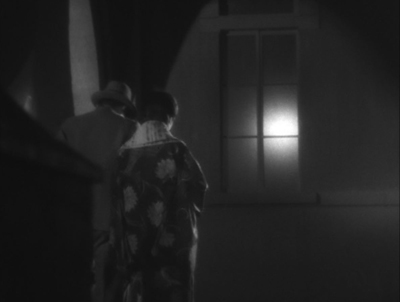 2
2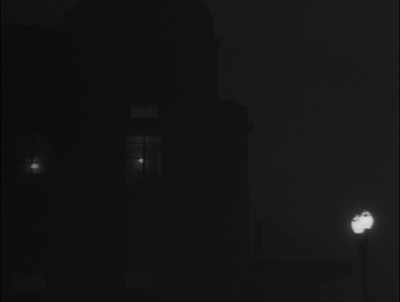 3
3
7 8
8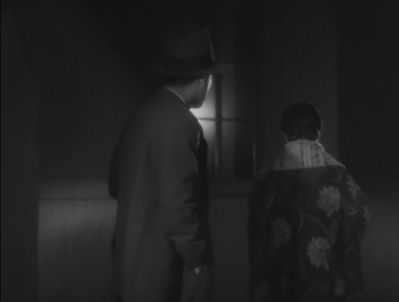 9
9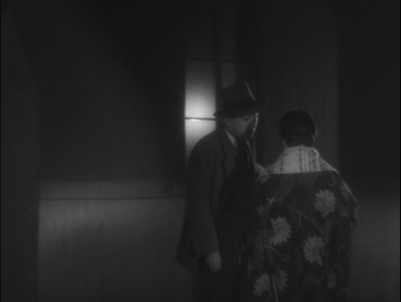
10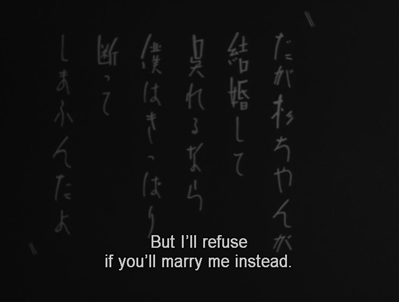 11
11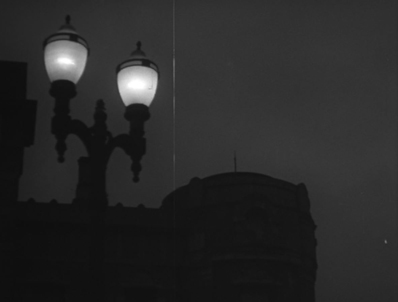 12
12
Once Machio has said he will marry Sugiko, there is another shot of the two lamps, closer than before (11). This is followed by a shot/reverse shot pattern between the two. At first Machio is seen looking rightward (12), with the cut to Sugiko showing her also facing rightward (13), a common tactic used by Ozu. Here, however, the cut back to Machio shows him facing leftward (14), as would be conventional following a shot of her looking rightward. Ozu would keep the characters facing the same direction throughout a shot/reverse-shot pattern (shots 9, 10, and 11). In shot 11 Machio turns to exit and shot, and in 15 he is seen from behind walking away from her–perhaps because she does not answer him immediately.
13 14
14 15
15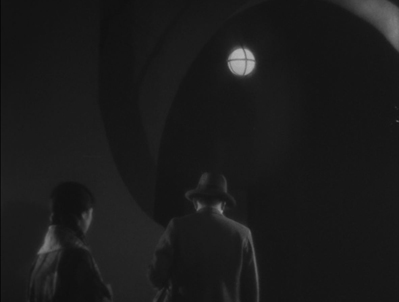
The only reason I can see for this change on the framing of Machio in the second shot of him is an echo of an earlier moment in the scene. In the shot in which Sugiko reacts to his news of his parents plan for him to marry, she turns away and starts out left (frames 6 & 7 above). The next shot shows her from the back, moving away from him. Within this shot, he goes after her and faces her again (frames 7 and 8). A cut-in leads to the inconsistent shot/reverse shots. This time he is the one to move away from her (compare frame 15 with frame 8). He returns to say they will have little money (16). After another cutaway to the two lamps (18), the scene continues with Sugiko saying will marry him anyway. Perhaps this echo hints at their eventual failure to marry.
16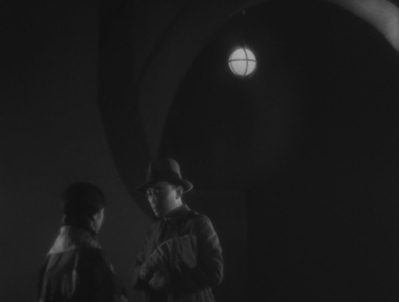 17
17 18
18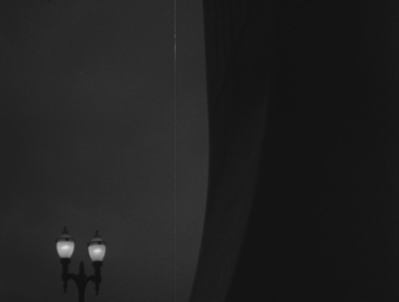
Through this sad main plotline Naruse weaves some lighter scenes involving Kesako. Her boyfriend is a move comic figure. A running joke compares his rather sloppy “modern” painting with a close view of him carefully setting up an elegant stack of apples and other objects as a model. In later scenes he shows off the painting and has to inform people that the subject is indeed apples.
As the title suggests, most of the action takes place in Tokyo and specifically the Ginza district. Sugiko’s romance with the weathy Hiroshi takes place in the countryside, emphasizing that he has an expensive car and can take her on such trips (top of this section). One might assume that this lyrical scene featuring Mount Fuji refers to Shochiku’s famous logo, but that logo was not adopted until 1936.
Street without End was Naruse’s last film for Shochiku. He left for the Photo-Chemical Laboratories studio, late to become Toho. His first film there remains his best-known from the era, Wife, Be like a Rose! (1935).
Street without End is one of five films from the first half of the 1930s in the Eclipse box set, “Silent Naruse.” It also streams on the Criterion Channel.
Dos Monjes (“Two Monks,” Juan Bustillo Oro)
As usual, I like to include an excellent film that deserves to be far better known. I first saw Two Monks at the Il Cinema Ritrovato festival in 2017. For me the most unexpected discovery of the festival. The occasion was a restoration of the film by Martin Scorsese’s World Cinema Project. I was impressed and blogged about it at the time. Here is a slightly revised version of what I wrote then.
It is considered the first in the Mexican Gothic genre. It was inspired by the Spanish-language version of Dracula (directed in 1931 by George Melford for Universal), as well as by German Expressionist films. Yet there are no monsters or supernatural villains in the film. Instead, a frame story set in a monastery that looks straight out of Murnau’s Faust (1926) introduces a young monk, Javier, who has gone mad. He attacks another monk, Juan, with an expressionistic crucifix and confesses to the prior that he did so because Juan had committed a terrible crime.
A lengthy flashback lays out the story of Javier’s love for Ana and his eventual rivalry with Juan. In the second half, Juan also confesses, and the story is repeated from his point of view. Scenes we saw earlier are replayed, often starting at an earlier point or ending at a later one, in a way that alters our understanding of the two monks’ past relationship. The result is not a Rashomon-type situation, for the two men agree on the events they describe, disagreeing only on the implications of those events.
It’s a remarkable narrational technique for this early in film history. The atmospheric claustrophobia created by the small cast (no passers-by are seen in the brief street scenes and no servants appear in the houses) and of dread created by the sets and the dissonant music of the climactic scene would bear comparison with the horror films of Universal and Hammer.
Two Monks is currently streaming on the Criterion Channel and some other platforms. It is available as a Blu-ray in the third of the multiple-film releases from the World Cinema Project, along with Héctob Babenco’s Pixote and also in a larger box set with six films.
The Black Cat (Edgar G. Ulmer)
I must admit that I spent quite a bit of time trying to decide on my tenth film, which in part caused this annual post to be a little late. I settled on Edgar G. Ulmer’s only contribution to the considerable number of Universal horror films of the 1930s. I’m not particularly a horror fan, but The Black Cat is my favorite of the Universal series. It has some characteristics that set it apart from the others.
One of these characteristics is that it doesn’t depend on some sort of science-fiction (Frankenstein) or supernatural (The Mummy and Dracula) monster. This makes it similar to James Whale’s The Old Dark House, my other favorite of the series. Instead The Black Cat concerns atrocities committed during World War I in a fictitious fort at Maramureș.
The plot of The Black Cat has one parallel to The Old Dark House. Both begin by introducing a couple who are forced by an accident caused by a storm to seek shelter in an an isolated house. In The Black Cat, newlyweds Peter and Joan Allison meet the kindly Dr. Vitus Werdegast (Bela Legosi), who helps them when the accident occurs and takes them to the house of his old nemesis, Hjalmar Poelzig (Boris Karloff). Poelzig traitorously surrendered the fort during the war, causing huge casualties. He now secretly performs Satanic rituals. After fighting in the war, Werdegast has spent fifteen years in a Siberian prison camp and now wants to find out from Poelzig what happened to his wife and daughter. Unbeknownst to him, Poelzig had married his wife and then, after her death, their daughter Karin.
Another thing that sets The Black Cat apart is that its setting is quite the opposite of the conventional old-dark house. Poelzig has designed his own house, a modernist, vaguely art deco mansion located atop the fort, which contains what Werdegast describes as 10,000 corpses of war victims.
To be sure, once Poelzig’s full madness is revealed, the action moves to the dark rooms below the house. One corridor contains cases holding corpses of women whom he hass somehow preserved, including Werdegast’s wife. An expressionistic set where he holds the Satanic rituals, including human sacrifices.
These settings add to the beauty of the film, a beauty uncommon in the Universal horror films. The other part of that look is accomplished by the cinematographer John J. Mescall. Mescall lensed a huge number of films during his career, most of them minor works. His main other claims to fame were King Vidor’s Wine of Youth (1924); two Lubitsch films, So This Is Paris (1926) and The Student Prince in Old Heidelburg (1927); Whale’s Bride of Frankenstein (1935); and John M. Stahl’s Magnificent Obsession (1935). The first look at Poelzig in the film comes when he wakes up and turns on the bedside light, creating a dramatic and ominous composition (above).
The Black Cat is noted as the first film that Karloff and Legosi starred in together. The contemporary setting and lack of supernatural elements allows both of them to act with less heavy make-up than usual. Legosi plays the rational and kindly (until the end at least) Werdegast impressively, which is a novelty. Similarly, as Poelzig, Karloff hides his villainy with cordial, polite conversation until the climactic ending.
A memorial slide show for David
After David’s memorial service in May (a video recording of which is permanently on Vimeo with no password necessary), some people on my Facebook page asked if a collection of photographs of David could be made available.
There was a slide show created to run on a loop in the lobby of the funeral home on the day of the service. I just posted it on Vimeo, also on the channel that David set up in order to put some lectures online. Again, there’s no password and it will remain online. This link takes you directly to it.
I thought it would be appropriate to begin and end it with frames from the funeral scene in Ozu’s End of Summer (above). In between are photos provided by many of our friends and colleagues, going back as far as a scan of a college yearbook photo of David as part of a group of projectionists he belonged to in his undergraduate days. The photos range from David alongside celebrities, at festivals and conferences, and just relaxing at the badminton parties we used to hold in our back yard.
The slides change automatically about every twelve seconds, but as with any video you can pause them. Many of you will want to do that for group photos; you’ll recognize old friends.
Thanks to our friend Michele Smith, who put together the original slide show. I think the images capture his personality as we all fondly remember him. Thanks also to Erik Gunneson for turning it into a video and for posting it.
A24: A company of interest
The Zone of Interest (2023)
Yes, another entry on A24. I didn’t expect for this topic to continue as a series, but the indie studio keeps doing intriguing and unusual things that most studios wouldn’t try. I first dealt with A24 because I was interested in the phenomenon of “prestige horror.” It was one of the studio most associated with that sub-genre, releasing films by Alex Garland, Roger Eggers, and Ari Aster. I had already written about Eggers’ The Lighthouse, a prestige horror film, though at the time I was more interested in its style than in the company that released it. When Garland’s Men was widely panned by critics who didn’t make much effort to figure it out, I posted an entry defending it and trying to explain its mysteries.
Finally, I dealt with A24 as an “auteur” studio, working its way up with increasingly prestigious releases, with Oscar wins resulting from Everything Everywhere All at Once, The Whale, and The Zone of Interest. It continued to brand itself with an expanding online shop full of cool merchandise. It also expanded thanks to a $225,000,000 investment that boosted the company’s valuation to $2.5 billion.
Now, almost exactly two years later, A24 still expands at a surprising rate.
A billion here, a billion there
On June 26, 2024, Variety announced an even larger investment in A24:
Film and TV studio A24 has secured a new round of funding led by Josh Kushner’s investment firm Thrive Capital. […]
Financial details and exact figures were not disclosed by A24 and Thrive Capital, but sources confirm to Variety the investment from Thrive Capital gives it a valuation of about $3.5 billion—a 40% increased since A24’s most recent round of funding in 2022, which was $225 million at a $2.5 billion valuation.
That’s a pretty big jump for a relatively small company. It may squelch the commonly held ideas that A24 is looking to be sold or is in trouble as a result of making quirky money-losing auteur films like Men and Ari Aster’s Beau Is Afraid. Apparently that’s not enough to scare off a major investment company.
It doesn’t get mentioned much, but A24 also has a television unit which has produced, among others, Euphoria, Ramy, Beef, and The Sympathizer.
Whether the three directors who were at A24 when they made their prestige-horror films will work there again is unclear. Eggers switched to Universal for The Northman and Nosferatu–a prestige horror film if ever there was one. Aster is still with A24, despite the failure of Beau Is Afraid (the international gross of which is only slightly higher than Men‘s.) His western Eddington, now in post-production, is being made by A24.
Garland’s Civil War is now the studio’s second highest grosser, so he has had a genuine hit to follow up the failure of Men. As I mentioned in my entry on the film, just before it’s release Garland had been talking to the press about about giving up directing and going back to script-writing. His current project is the script for 28 Years Later, directed by Danny Boyle, also in post-production. This move may simply be because Garland and Boyle co-wrote the original 28 Days Later (2002, directed by Boyle). This, the third of the “28 Days Later trilogy,” is being made by Columbia, but so far there’s no indication whether Garland will return to directing, with A24 or not.
A24 is still making horror films, but it would seem that they are less essential to the company’s income than they once were. Speaking of which, just this morning I got an email message with a link to the trailer of The Legend of Ochi, which looks a bit like E.T. meets Gremlins.
Merching onward
I discussed A24’s branded merchandising in my previous entry. The company has forged ahead, starting a fan subscription group called AAA24. This get the member some tchotchkies and “exclusive merch, early access, zines, member pricing and more” according to the sign-up page. The member pricing is 10% off items purchased–no small consideration for the faithful A24 following.
Recent additions to the shop include crossword-puzzle books themed for TV and movie fans (above). These can be purchased separately or as a set.
I was pleasantly surprised to see an admirable book aimed at parents and children: Hey Kids, Watch This! Many of the recommendations are films we have DVDs and Blu-rays of sitting on our shelves. This two-page spread includes some films much beloved by David: The Young Girls of Rochefort, Linda Linda Linda, True Stories, and School of Rock. Alongside five American films (though hardly typical ones) are a Japanese and an Australian film, plus an American/Chinese co-production. Another double-page spread gives a quick introduction to Hayao Miyazaki and Ghibli films. Another spread recommends Zhang Yimou’s Hero and gives another quick introduction to the Wuxia genre. (David would have loved it.) Yet another introduces kids to Abbas Kiarostami! It’s not a children’s thin picture book but a solid 288 pages of recommendations, cartoons, and activities. I imagine kids from families who take the advice of this book may grow up to be the Criterion followers of tomorrow.
A24 fans who were disappointed when the Hot Dog Fingers sold out will be glad to know that they are back in stock.
Do It Themselves Blu-rays
Among A24’s merchandise are the Blu-rays for some of its own films, sold directly through its online shop rather through outlets like Amazon. I mentioned the director’s cut version of Midsommar in my piece on prestige horror. The Lighthouse was released on Blu-ray through Lionsgate in early 2020. In the spring of 2023, however, A24 put out its own collector’s edition, with lots more extras and available only through their shop. Other collector’s editions available on the same basis are The Green Knight, Everything Everywhere All at Once, Stop Making Sense, and The Last Black Man in San Francisco.
Some A24 releases that are not collectors’ editions are also being released as Blu-rays by A24, again only through their online shop. I Saw the TV Glow and Marcel the Shell are not sold on Amazon.
Of particular interest to David and me was the release of The Zone of Interest. During his illness David was not able to see films in theaters, and I seldom had a chance to do so. We were unable to see The Zone of Interest until it became available on streaming February 20, 2024. It was the last new foreign film David saw before his death on February 29. I was glad that he was able to see it, since we agreed that it was one of the best films we had seen in years.
A24 released the Blu-ray exclusively through its shop (July 26). It has supplements, but not a lot. I wonder if it will become the first foreign film to get the “collector’s edition” treatment. Would the subtitles outweigh the Oscars it won?
It has been somewhat amusing to watch Amazon offering imported Blu-rays when they cannot get them from the domestic makers. (This is not confined to A24 by any means.) Love Lies Bleeding, available through A24, is represented by an Australian import on Amazon. As far as I can see, the only version of Showing Up available on Amazon is a French import, which may be dubbed. (Amazon does not always make it clear that films are dubbed or without subtitles in English or in a region code watchable on standard US players.) You can stream Showing Up if you have Paramount+. For a complete listing of A24’s Blu-ray releases, see here. The Zone of Interest can currently be purchased on Amazon in an imported Australian Blu-ray and a German one which may or may not have English subtitles.
A24 does not put out all of its films in this exclusive fashion. Alex Garland’s Civil War, the studio’s most expensive production to date and currently its second highest grosser after Everything, Everywhere, was again released through Lionsgate and is available on Amazon. I’m not checking every A24 title, but I assume most of their horror and other genre films are given ordinary releases. (Whether Civil War warrants being called an apocalyptic horror film is debatable. See bottom for a scene that might qualify it.)
Aiming for prestige
With Oscar nominations and wins, plus a lot more money, A24 has been continuing to acquire prestige films from this year’s festivals.
As the Venice International Film Festival began, A24 picked up the gay drama Queer (starring Daniel Craig and directed by Luca Guadagnino, who made Call Me By Your Name). It subsequently received a nine-minute ovation at its premiere screening. A24 has announced November 27 as the date for the film’s release.
The company also won in a bidding contest for The Brutalist, starring Adrian Brody, which won the Silver Lion (best directing) for Brady Corbet . It is scheduled for a December 20 release. A24 had already acquired distribution rights for the erotic thriller Babygirl, starring Nicole Kidman, before it played in competition at Venice; it will be released on December 25. (Its director, Halina Reijn, also made the horror film Bodies Bodies Bodies, distributed by A24 in 2022.)
This little flurry of late-year releases of festival films suggests that A24 thinks they are Oscar-bait, and they well may be. The company has a track record now. (Above, James Wilson and Jonathan Glazer with the best international film Oscar for The Zone of Interest.)
Whether A24 will remain the interesting studio that has inspired these blog entries is yet to be seen.
Civil War (2024)
Where the movie lovers are: A guest post by Matt St. John and Zachary Zahos
A crowd lined up for a screening at the 2024 Wisconsin Film Festival (Source: Wisconsin Film Festival Facebook)
KT here:
About a month ago, August 17 to be precise, Variety published an essay by Owen Gleiberman. In it he decries the fact that while national grosses of mainstream films, especially blockbusters, have been recovering from the problems caused the pandemic and the writers’ strike, art-house films have not seen a comparable recovery. The blame for this disparity he places squarely on the shoulders of people who love art-house fare. They are either too timid to venture back a crowded theater or so lazy that they prefer to lounge about streaming movies. He even calls these art-cinema devotees “the bad guys” for having damaged the art-house market so badly. He considers no other possible causes of the art-house-cinema grosses failing to recover something like their former levels.
This struck me as unacceptable as a sole cause for the decline. I was tempted to write a response myself, but I didn’t have the data that would be needed to refute his claim. Fortunately the cinema-studies area of the Department of Communication Arts at the University of Wisconsin-Madison has a history of professors and graduate students studying the film industry. I have turned to two recent Ph.D. recipients whose areas of expertise are ideal for a guest post analyzing Gleiberman’s argument. They have delved into the working of the two main places where people see foreign films, indies, and restored classics in a theatrical setting: film festivals and art houses.
Matt St. John’s dissertation is entitled, “United Slates: The Evolution of the American Film Festival System.” He defended on July 20, 2023. In it, he examines the industrial functions of American film festivals and their historical development into an extensive system. Matt is currently a manuscript archivist at the Wisconsin Center for Film and Theater Research.
Zachary Zahos‘ dissertation is entitled, “Meaning in the Margins: Boutique Distribution and the Contemporary Art House Film Market.” He defended on July 10, 2024. In it, he historicizes the emergence and analyzes the releasing strategies of boutique distribution companies like Milestone Films, Kino Lorber, and The Criterion Collection, from 1980 to the present.
These two experts have information that is current. I am grateful to them for sharing that information, which shows that the decline in art-house grosses has many important causes and that the attendance by lovers of non-mainstream films has not dropped nearly as much as Gleiberman claims. They also exonerate those supposedly timid, lazy “bad guys.”
(Note: some of the sites linked below are behind paywalls.)
“Where the movie lovers are”
Have movie lovers stopped seeing movies? Owen Gleiberman thinks so, pressing the case that the sky is falling, or at least the ceilings of art-house theaters, in a Variety column last month (linked above).
Under the headline, “Will the People Who Say They Love Cinema the Most Come Back to the Movies?” Gleiberman reflects on the gap he perceives between the state of independent moviegoing today versus that of the halcyon 1990s. After listing the box office hits of the summer (primarily released by Disney), he steps back to note that “there is still a major piece missing”:
But what about the good guys of the ’90s — the adventurous moviegoers whose enthusiasm sparked the rise of indie film? Have they all gone away? No, but sorry, they’ve become the bad guys. Because they’re the ones who are staying home.
Gleiberman rounds up the usual suspects like streaming, lingering effects of the pandemic, and the deluge of home media options, before stating that droves of people are still clearly seeing films, leading to his main question: “Why aren’t more of the people who say they love cinema among them?”
Longtime readers of this blog will recall popular discourses of yore proclaiming “the Death of Film,” given how frequently David (here) and Kristin (here and here) have deflated such doom-and-gloom arguments over the years. For our part, we do not wish to put too fine a shine on the industry outlook today. From the popular press alone, recent features in Harper’s, The New York Times, and The New Yorker supply plenty of evidence on how deregulation, COVID-19, and intellectual property have respectively hindered “the movies,” as we know or knew them.
But in Gleiberman’s case, his column provides no evidence for its central claim: that audiences are to blame for the decline of independent and non-blockbuster films like dramas. Of these supposedly marginal films, he writes:
You might say: Those movies do the business they do. There’s no world where they would have been bigger. But I’m saying that we need nothing less than a collective rediscovery of what commercial filmmaking can mean. Yes, it means twisters and bad boys; it means Marvel and horror; it means rom-coms and animated rides. But can’t we envision a world, once again, where it could also mean…drama? (Just look at the business that “It Ends with Us” is doing.) Where the big screen can take two people talking in a room and make them larger than life?
Leaving aside the merits of casting It Ends With Us as the poster child for the kind of cinema that needs to be saved, we take issue with the overall vagueness of Gleiberman’s prognosis. How does “a collective rediscovery of what commercial filmmaking can mean” take place, and where? It likely involves the independent distributors and exhibitors who acquire and screen the non-blockbuster fare Gleiberman champions, yet the column makes no mention of these entities, or the specific strategies they have attempted as of late to retain and even expand their audiences. Rather, the blame rests squarely on the consumer:
This summer proved, beyond a doubt, that movies are still a hot commodity. The real question — not just for now, but for 20 years from now — is: What, exactly, is a movie going to be? It’s time that the people who say they love movies the most answered that by showing up for them again.
The last line especially rankles, because, for all the challenges “adult dramas,” indie cinema, and art house theaters face, uninterested audience members rank low on the list. Streaming’s plentitude certainly keeps many viewers at home, and box office failure is not confined to the independent film sector alone (see here, here, and here). As researchers focused on the contemporary art house distribution and film festival landscapes, we have observed a range of data points indicating enthusism among art house audiences, in particular the desire for more: more theaters, more volume, more unexpected and diverse programming options (see here, here, here, and here) .
Are audiences to blame for the struggles of independent and non-blockbuster films? The more salient issue, we would argue, comes in the transformation of distribution and exhibition infrastructure over recent years — changes which are especially visible in the markets outside of New York and Los Angeles. We’re not suggesting that it’s all blue skies and sunshine for art houses in the largest cities in the country, but film-loving audiences in smaller cities across the United States are meeting a more complex and varied set of situations and places in which they can view new independent films. When you actually follow the release trajectories of specialty fare today—as films bounce between multiplexes, art house theaters, and regional film festivals, propelled by increasingly short platform launches—“the people who say they love movies” start to look not so much checked-out, as scattered and spread thin.
Art-house theaters: Everything
Reading the trades here in Wisconsin—where we still receive our bundles of Daily Variety via horse-drawn carriage, as you no doubt picture—we tend to notice that industry press coverage can lose sight of the regional nuances of distribution and exhibition. (Anthony D’Alessandro’s box office reports for Deadline remain a notable exception for digging into regional market data, week after week.) These distinctions may seem small, but they are important when, for one, you want to gauge what makes a genuine domestic hit, on the specialty circuit or otherwise. Understanding how art-house theaters program and how specialty films travel, outside of New York and Los Angeles, is even more relevant when you set out to diagnose the behavior of cinephiles and “adventurous moviegoers” today.
To put it plainly, art house theaters across the country program more heterogeneous slates than ever before. New York may have the population and infrastructure to sustain a handful of theaters solely dedicated to first-run indie/international cinema and repertory film, art houses like Film Forum, Film at Lincoln Center, IFC Center, Metrograph, the Angelika Film Center, and Anthology
Film Archives. But independent theaters elsewhere, in addition to programming the latest indie or hot revival, often dedicate a share of their screens to first-run Hollywood titles—movies like, most recently, Beetlejuice Beetlejuice. While this brings in much-needed ticket sales for the venues, it means that screens traditionally reserved for specialty films are now, at times, showing new major releases.
Here is just a sample of the U.S. art houses now playing Beetlejuice Beetlejuice: the Athena Cinema, in Athens, Ohio; the Texas Theatre, in Dallas; FilmScene in Iowa City; and Sidewalk Film Center and Cinema, in Birmingham, Alabama. Even Manhattan’s storied Quad Cinema has joined in on the fun. All the while, these theaters are still screening independent films. The Athena is currently splitting its second screen between two A24-distributed titles, the drama Sing Sing and horror film The Front Room, as well as a nature documentary. FilmScene is also showing those two A24 films, plus the French thriller Red Rooms and grindhouse restoration Six-String Samurai. Down in Alabama, Sidewalk Cinema’s slate this week offers a snapshot of how pluralistic art house programming can be. In addition to Beetlejuice Beetlejuice, this two-screen theater booked the independent drama Good One, distributed by Metrograph Pictures; the documentary Family Tree, as part of the Southern Circuit Tour of Independent Filmmakers initiative; and revival screenings of Mary Poppins, via Disney, and Seven Samurai, via Janus Films.
None of these theaters are booking the $100 million Warner Bros. tentpole at gunpoint, as far as we can tell. In fact, the promotional gas these art houses have expended on Beetlejuice Beetlejuice is telling. The Texas Theatre, FilmScene, and the Athena all currently spotlight the film on their Facebook page cover photos, with the Athena having posted its image back in early August.
Nor are these art houses clearing half their slate for just any studio product. The embrace of Tim Burton’s Beetlejuice Beetlejuice, among independent theaters, falls in line with the post-pandemic exhibition strategies outlined in this 2022 Business Insider piece. Films by auteur directors, working in franchises or with bigger budgets, like Dune or No Time to Die in 2021 or Barbie last year, not only draw crossover audiences but cater to their most dedicated patrons, too. According to Business Insider, the highest-grossing film of 2021 at the Avalon Theatre, Washington D.C.’s historic art house, was In the Heights, despite debuting day-and-date on HBO Max and developing a reputation since as a box office flop.
Films like Beetlejuice Beetlejuice and Barbie present exhibitors with ample opportunity to “eventize,” a term of art we heard often at the Independent Film Exhibitors Conference, IND/EX for short, held in Chicago a few months back. Last year, the waves of Barbie pink that crashed over theaters, like the custom Barbie box photo op in the Sidewalk Cinema’s lobby, pictured above, are among the more visible instances of such “eventized” filmgoing. Beetlejuice’s pinstripe decor has popped up in multiplexes and art houses like FilmScene, as has the likeness of Bob the Shrinker on merch and cocktails sold at the Texas Theatre. Such offerings are clear appeals to come see the film at a place that is more fun than your average multiplex, a theater that celebrates the films it shows with DIY flair, not just studio promotional materials. Less flashy forms of eventizing include member’s only screenings, which Sidewalk conducted for Beetlejuice Beetlejuice last Thursday, the day before its official release. Not only does this practice make screenings special, but it also encourages people to join the membership rolls, which, as that aforementioned Business Insider piece made clear, help keep the lights on at most independent theaters these days.
The median art house may very well wish to book more studio films than it currently does. The challenge comes not so much in alienating an existing audience, but rather in navigating clearances with the local multiplex or settling on a sensible profit share and screen commitment with the major studios.
For now, most art houses are balancing their historical bread-and-butter, namely independent and repertory fare, with hot Hollywood tentpoles. This balance, by necessity, sacrifices screens for the kind of specialty films Gleiberman accuses cinephiles of abandoning, yet we would dispute the charge that the audiences pouring in to see Beetlejuice Beetlejuice at an art house like FilmScene or Sidewalk do not count among the movie lovers worth cultivating. We would also like to know how many of these viewers will also end up seeing Seven Samurai at Sidewalk this week, or the Cannes-laureled thriller The Substance after that? We would be willing to bet more than a few, especially among younger viewers with Letterboxd accounts.
Specialty films: Everywhere
Just as art houses today program both specialty and blockbuster films, said specialty fare (by which we mean not just American indies, but also subtitled international, documentary, and repertory film) travels across a wide range of venues, beyond art house theaters alone. Due to the power of corporate chains like AMC (see here and here), especially in regional markets, specialty distributors often book their titles in big multiplexes rather than art houses. Other venues such as film societies and film festivals—many considered “nontheatrical” or “ancillary” by distributors, and thus not always counted in public grosses—fill in the gaps, and these institutions cultivate audiences devoted to artful cinema in the process. But these one-off screenings, despite reliably turning out movie-mad people in whatever locale they occur, usually rent films for a flat fee, meaning a series of sold-out screening may not add much to box office totals. This all has clear implications for how art house films “play” in most areas of the country.
Consider our Madison, Wisconsin—population: 269,840, metro area: 680,796—for but a moment. Our art house options may look miniscule compared to New York, Los Angeles, or even Chicago, but believe it or not, a ton of specialty films screen here regardless. The extent to which art house titles arrive here anyway, often in unheralded or fleeting stays, provides a sense of how specialty distributors book films in mid-size American cities today.
From a cursory glance, Madison’s moviegoing landscape may look bleak. Technically, Madison has not had a full-service art house cinema since 2016, when our Sundance Cinema (6 screens) was sold to AMC Theatres (that AMC location likewise closed in 2022). Our second-run cinema Market Square Theatre (much beloved by David and Kristin) would frequently book independent titles, but that also closed in 2022. At present, the Madison theatrical market consists of four multiplexes, all of them chains, whether national (one AMC) or regional (we have two Marcus Theatres, plus Flix Brewhouse). Our AMC boasts 18 screens, our Marcus multiplexes possess at least 15 screens each, and Flix Brewhouse has eight, tilting the latter toward more mass-market titles. Against this backdrop, our university-sponsored, free-to-the-public UW Cinematheque has become “the city’s arthouse by default” due to its cinephilic programming, while UW-Madison’s student-run WUD Film, in addition to its second-run prerogative, also books specialty titles like Anatomy of a Fall and Past Lives. So, in sum, that leaves Madison metro with four multiplexes and two nontheatrical venues, plus our annual Wisconsin Film Festival. Six theaters total, yet somehow we have three Costcos.
But specialty films play in all the aforementioned Madison venues. At least one screen at our AMC is dedicated to the latest Indian import on any given week. In recent months, Bertrand Bonello’s The Beast and Ryusuke Hamaguchi’s Evil Does Not Exist, art films to the letter, also played at our AMC, thanks to the joint distribution effort of Janus, Sideshow, and Variance Films. The catch is that, even in a mid-size market like Madison, specialty titles such as these fall into countless different tiers of screen size and scope, as determined by distributor and exhibitor.
We can look at the last year of A24’s distribution slate to get a better sense of this. By our count, between the beginning of September 2023 and September 6, 2024, A24 booked New York theatrical runs for 18 titles. Of these 18 titles, 16 screened or are scheduled to screen in one of the aforementioned Madison venues. (The exceptions are Steve McQueen’s four-plus-hour documentary Occupied City, which for runtime reasons is understandably absent, and Raven Jackson’s All Dirt Roads Taste of Salt, which despite its excellent reviews, here, here, and here, has also not been booked.)
Putting aside Alex Garland’s Civil War, which opened wide across large-format screens, the other 15 A24 films run the gamut of bookings. Higher profile genre and awards-season titles, like The Iron Claw, Love Lies Bleeding, and MaXXXine, opened simultaneously across all four Madison multiplexes. Below this tier, more offbeat or meditative art house fare, like Dream Scenario, Tuesday, and I Saw the TV Glow, have opened in two multiplexes, usually AMC Fitchburg and Marcus Point Cinema, and typically stayed for over a week. Below this, what we presume are considered even harder sells, like Dicks: The Musical and (our personal favorite of the bunch) Problemista, appeared in Marcus Point Cinema for a week, then vanished. Other A24 titles began, and in some cases also ended, their Madison journeys at our UW-Cinematheque. The Zone of Interest inaugurated the Cinematheque’s past spring calendar with a screening where numerous people had to be turned away. Closer to the Academy Awards ceremony, it was booked into multiplex runs. Aaron Schimberg’s dark satire A Different Man, another A24 title, just opened the Cinematheque’s fall calendar to a packed house, though the film’s local trajectory, beyond this one screening, remains uncertain as of this writing.
We outline all these distinctions to stress that, before the audience has a say in any of this, the vagaries of distribution and exhibition have shaped the trajectories of specialty film. We would have liked to see A24 do more than drop Problemista in our market without fanfare, just as we would have wished to see a local exhibitor promote its presence at all.
An odd quirk of regional specialty film circulation is that the most packed and electrifying screenings often add precisely $0 to a film’s reported theatrical gross! As in, some of these screening fees go toward a distributor’s column of ancillary revenue — again, meaning those earnings don’t show up on Box Office Mojo. Other screening fees are outright zilch. One thing we’ve learned from our recent conversations with small exhibitors is that outfits like A24 or Neon will sometimes send their latest titles to venues (usually nontheatrical ones) without charge. These distributors enable these sneak previews not because they hope no one will show up, but because they know such hubs of movie love are legion—ravenous, even, for something different. While we are curious to find data to support this claim, we suspect the word-of-mouth that follows such screenings can tee up a more successful theatrical run in smaller markets. But that only works if the films play theatrically in the markets at all. In short, the total national grosses for such films used by Gleiberman give a misleading measure of how many people are actually watching those films in a theatrical venue.
Beyond the multiplexes and film societies that make up the typical offerings for filmgoers here in Madison and many cities like it, film festivals present another wrinkle in the assumption that theatrical grosses reflect enthusiasm for specialty films. While festivals that feature major film premieres are the most familiar names, like Sundance, South by Southwest, and Telluride, dozens of other festivals occur each year in cities across the country. Audiences can see new American independent, foreign, and documentary films, and in some cases repertory films, at festivals like the Wisconsin Film Festival in Madison; the Cucalorus Film Festival in Wilmington, North Carolina; the Virginia Film Festival in Charlottesville; the Sidewalk Film Festival in Birmingham; the True/False Film Festival in Columbia, Missouri; and many others. Such festivals are deemed “regional” by scholars and critics for their perceived audience reach and press coverage, rather than their programming focus.
If Gleiberman and others concerned about the lack of support for specialty film releases need encouragement, they should look no further than the enthusiasm for events like the Wisconsin Film Festival, which regularly sees sold-out screenings and lines around the blocks of venues throughout eight days of programming (see top and bottom). During this year’s festival in April, we attended a packed screening of Joanna Arnow’s The Feeling That the Time for Doing Something Has Passed. It’s not such a surprise that audiences would flock to a new independent comedy with a winningly droll protagonist, played by the film’s writer and director. Even genre-defying art cinema also saw huge crowds. A Sunday afternoon screening of Lois Patiño’s new film Samsara (above) was filled to the brim with cinephiles eager to see the new slow cinema entry about a dying woman and reincarnation. The film asks the audience to close their eyes midway through the story, when, as Wisconsin Film Festival artistic director Mike King describes it in the program, “The liminal state between life and death is conjured through light and color we perceive through our closed eyelids.” In our minds, this is far more adventurous, challenging, and rewarding than the average two-people-talking-in-a-room dramas that Gleiberman misses, and Madison’s cinephiles did not stay home for Samsara! Distributors, take note – for reasons that defy our understanding, Samsara does not have domestic distribution. If you have someone as convincing as Madison’s own Mike King selling the films to audiences, you could have an art house hit on your hands.
Audiences are indeed seeking out excellent new films outside the blockbuster mold at events like the Wisconsin Film Festival, but, of course, festivals occupy a different role in film exhibition than traditional theatrical venues. (Unlike the Cinematheque, the WFF charges admission.) Like film societies, festivals often book titles for flat-rate fees, so even a considerable number of sold-out festival screenings may not translate to comparatively high reported box office totals. In any case, the ongoing success of regional festivals that show new films to hungry audiences suggests that moviegoers have not abandoned cinema outside of blockbusters. Instead, they may be seeing these films outside of traditional exhibition structures.
Limited release platforms: All at Once
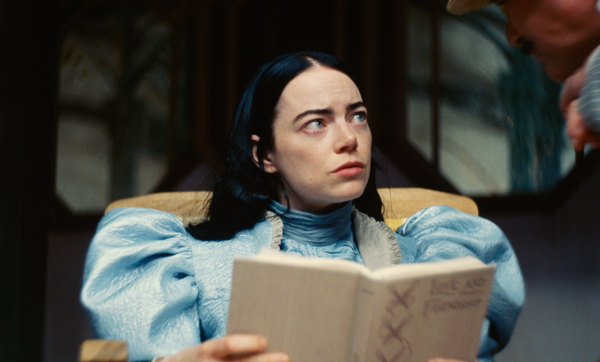
Emma Stone in POOR THINGS. Photo Courtesy of Searchlight Pictures. © 2023 Searchlight Pictures All Rights Reserved.
Audiences are not only encountering films through inconsistent distribution strategies or alternate exhibition routes like festivals, they are also facing a new landscape of fewer and shorter opportunities to see new specialty films. We have deliberately avoided talking too much about streaming, as we would just be reiterating points David has already made (here and here), and because Gleiberman yada yada’d the matter in his column. But as we move toward a conclusion, it is important to acknowledge one of the notable casualties of the streaming era, the 90-day theatrical window, and how specialty distributors and art house theaters have responded to its demise.
You, dear reader, already know how the COVID-19 pandemic accelerated the collapse of theatrical windows. These periods of exclusivity, determining how long viewers had to wait before catching the latest Despicable Me at home or on a plane, had stood firm for decades, as the mutually agreed way distributors and exhibitors had to maximize the profits and prestige of movies as well as the moviegoing experience. Netflix famously disrupted this status quo, and the legacy studios, though they ceded some ground before 2020, buckled with the onset of the pandemic and started delivering their most premium titles at home, within that sacred first window. While theatrical windows have recovered from those dark days, the average period of theatrical exclusivity remains a fraction of what it once was — 37 days, according to Tom Brueggemann’s recent analysis at IndieWire.
This shortened average window can affect the performance of not only blockbusters, but specialty films most acutely. Since the days of Rashomon, art house titles rolled out slowly across the country, opening in New York and a few other select markets before expanding. These limited platform releases took time and crucially required distributors to adjust their plans on the fly, as initial box office reports appeared. The consequences of diminished theatrical windows, in this art house context, should be abundantly clear.
Some specialty distributors have addressed this crisis by releasing their titles, nationwide, over an extremely compressed timeframe. Wes Anderson’s Asteroid City caught headlines last June when Focus Features decided to collapse its platform release timeline from a typical span of months to just two weeks. In its first week, Asteroid City played in six theaters, to a sensational per-theater opening weekend average of $132,111. The next week, the film expanded nationwide to 1,675 theaters. That weekend’s $9,053,551 haul may have convinced Focus to bump up the following weekend’s theater total to 1,901 theaters, but after its fourth weekend, Focus made Asteroid City available on premium video-on-demand, closing that first window.
Focus Features expressed confidence with its Asteroid City theatrical plan, and its $28 million domestic gross made an enviable foundation for the ancillary revenue it has accrued since, as virtually guaranteed by its star-studded cast and auteur’s popularity. But compressing windows for specialty films so dramatically runs the risk of ending a film’s theatrical life before local audiences have a chance to learn about it (sorry, Problemista!). Sony Pictures Classics co-founder Tom Bernard recently expressed as much:
You get to go out into the world much faster, but [chains such as AMC and Regal] only play the movies for a couple of weeks. … Then they want to cycle in something different. So you get to $1 million or $2 million [at the box office] more quickly, but then you’re done theatrically.
Despite the apparent resistance of some exhibitors, platform releases can still pay off. Searchlight’s distribution of Poor Things, one of the titles Gleiberman suggests should have been a bigger sensation at the box office, capitalized on the longstanding strategy. When the film opened in nine theaters across four cities (New York, Los Angeles, Austin, and San Francisco) last December, Deadline noted its high per theater average of $72,000. Poor Things expanded to 17 markets the next week followed by 80 additional cities before the end of the month, and it played exclusively in theaters until its digital release on February 27 of this year.
Poor Things broke $100 million at the global box office after the successful platform release and received a healthy haul of 11 Oscar nominations. Disney’s head of theatrical distribution, Tony Chambers, told Hollywood Reporter, “It is a testament to the strength and quality of the movie, the publicity campaign and the tactical roll-out strategy that after a modest start we are now on track to ultimately hit $115 million globally.” Even with the prominence of star Emma Stone, ending its run with $34.5 million in the United States is no small feat for a very dark comedy about the liberation of a Victorian woman revived via transplant of an infant’s brain. (It’s worth noting here that Yorgos Lanthimos’s previous, acclaimed feature The Favourite totaled nearly the same domestic gross, $34.4 million, in 2018.) The word-of-mouth generated through platform releases appears to remain a viable part of a careful distribution and promotion strategy for studios with box office and awards hopes for their fall releases, even if the path is no longer a given.
We recognize that the patchwork circumstances of film exhibition that have developed in recent decades can lead to lopsided success for blockbusters and little else. On this front we largely agree with Gleiberman’s concern. But blaming audiences for this situation seems an incomplete explanation, at best, given that cinephiles across the country are still seeing movies far beyond just the tentpoles. We are eager to observe how distributors release specialty fare in the coming months, as the major fall festival premieres eventually reach smaller markets around the country. If distributors are willing to deploy platform releases and maintain substantial periods of exclusivity for new films, they could see more titles with solid box office hauls.
Could audiences vote with their dollars to see better films? Probably! But we know without a doubt that the situation is more complex than assumptions that cinephiles have abandoned challenging movies. With factors like shorter theatrical windows, art houses turning toward major Hollywood releases to make money, and increased opportunities for audiences to see specialty films outside of theaters, such as festivals, a look at the current landscape of distribution and exhibition resists the notion that audiences alone are responsible for the challenges facing specialty film releases.
Note: A recent survey conducted by Roku suggests that streaming vs. in-person moviegoing is not a zero-sum game. Among its many data points, the survey notes that “high-frequency streamers” are more frequent moviegoers than “low-frequency streamers.” The survey also spotlights Poor Things and the enthusiasm that followed it across traditional and digital channels, culminating in the film’s Academy Award wins and the attendant spike in streaming interest this past March. (The story linked requires free registration to access.)
Our gratitude to Kristin for spurring us to write this piece and offering insights about the UW-Cinematheque and Wisconsin Film Festival.
Several ideas and data points for this article were gathered from productive conversations we had at the 2024 IND/EX Conference, held in Chicago from June 25 to 28. Many thanks to the leaders at Art House Convergence and Film Festival Alliance for assembling a splendid program. Zach also extends his gratitude to the Marilynn R. Baxter Fund, as administered by UW-Madison’s Department of Communication Arts, for funding his conference attendance. Matt is grateful to the Wisconsin Center for Film and Theater Research for supporting his attendance to speak about the ongoing “Expanding Film Culture’s Field of Vision” project, funded by the National Historical Publications and Records Commission.
Thanks to Jim Healy and Mike King for supplying data points on exhibition, Ani Biswas for help clarifying Madison theater esoterica, Allan Monterrubio for the photo of Sidewalk Cinema’s decked-out Barbie lobby, and Karla Khodanian for her boots-on-the-ground insights about Sidewalk Cinema’s recent programming.
Wisconsin Film Festival at the Barrymore Theater, 2017. In 2024 the place looked much the same.












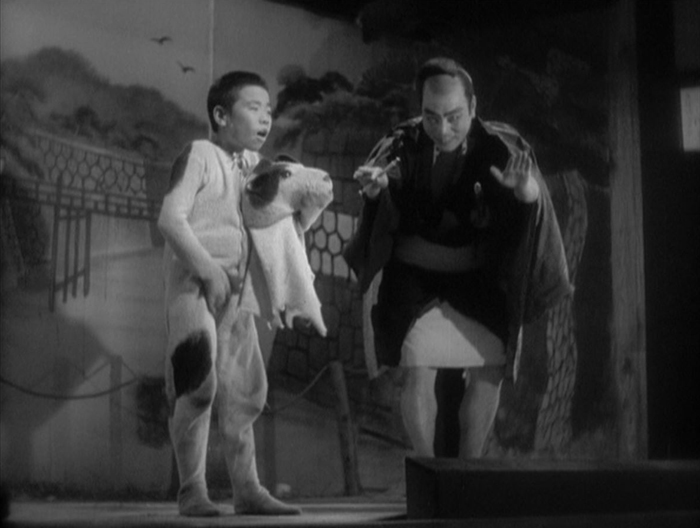
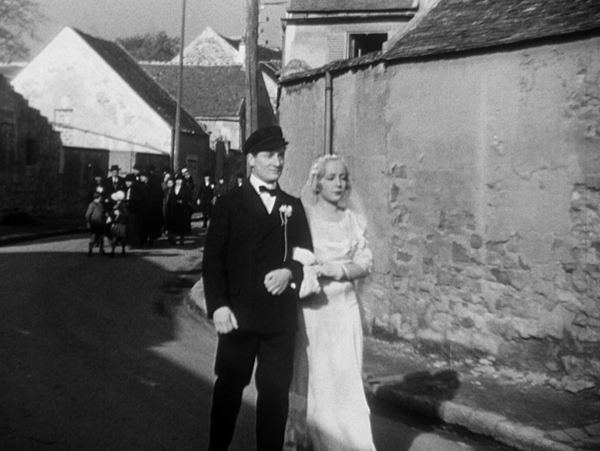
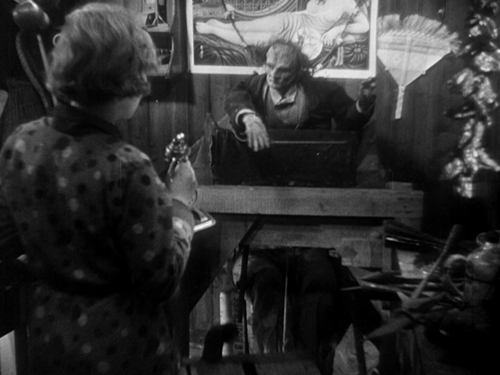
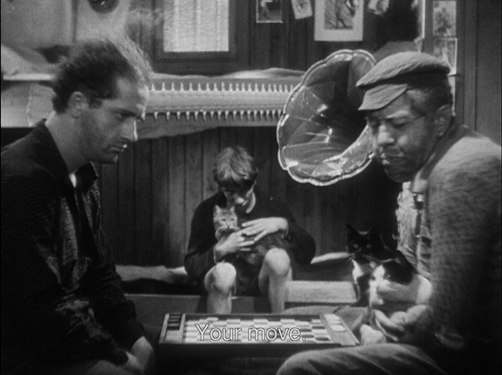
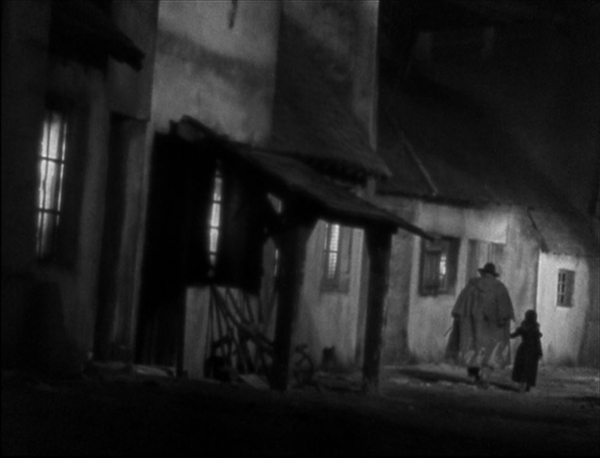
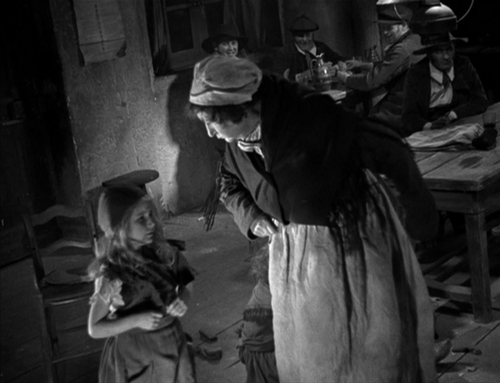
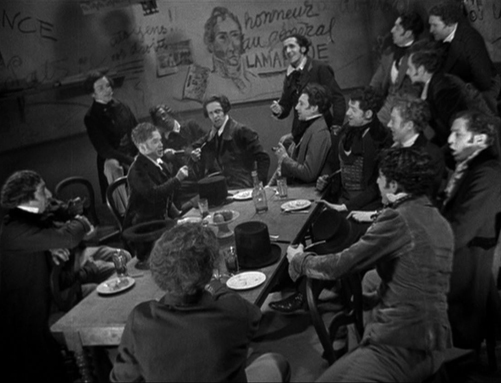
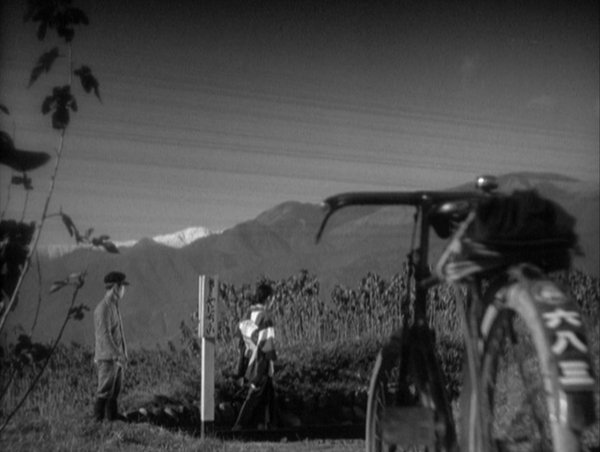
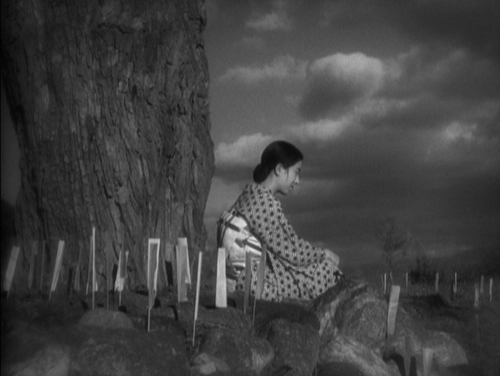
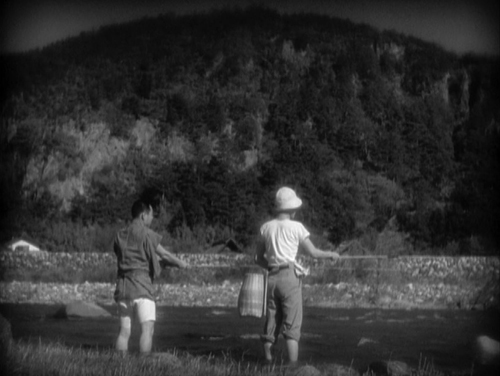
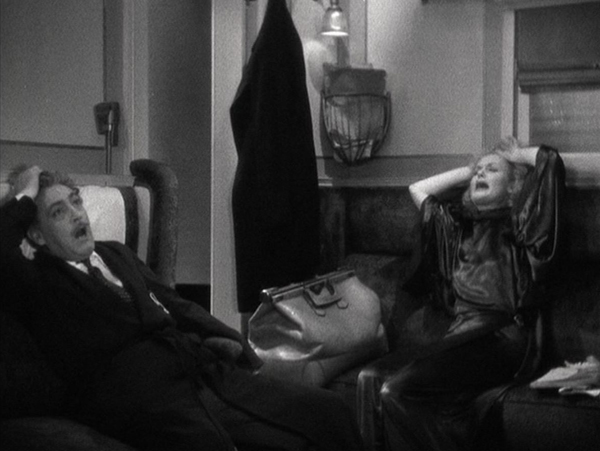

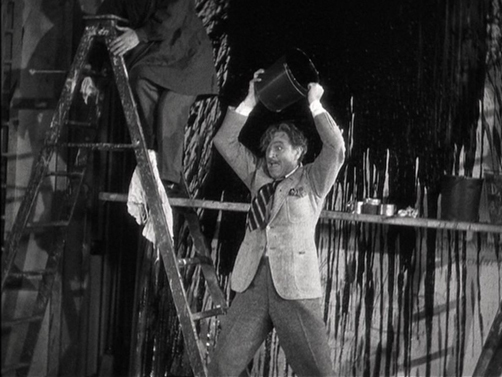
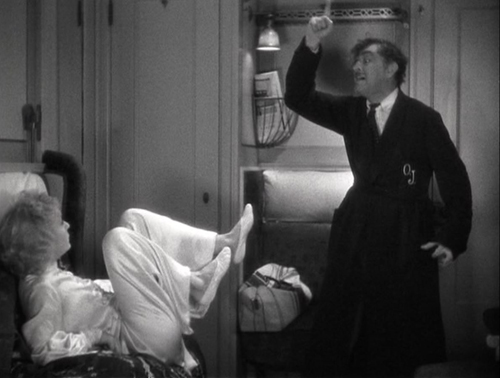





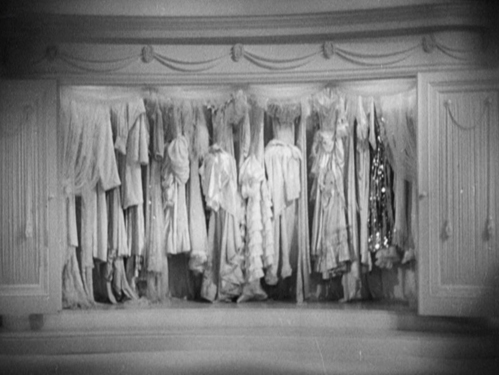
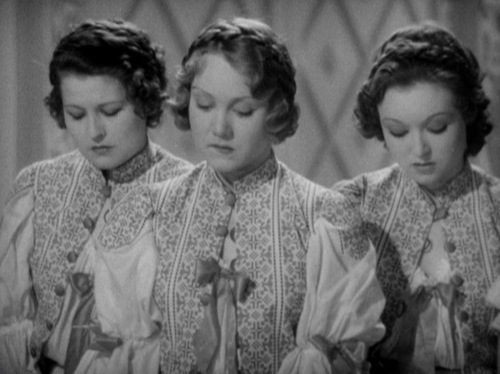
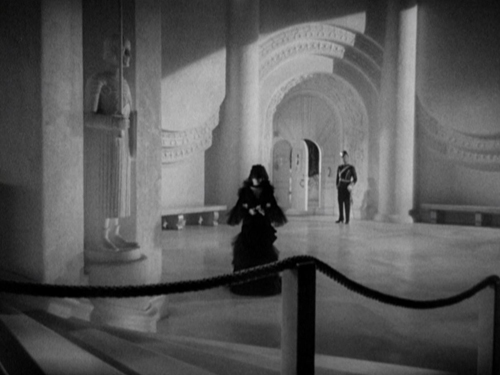

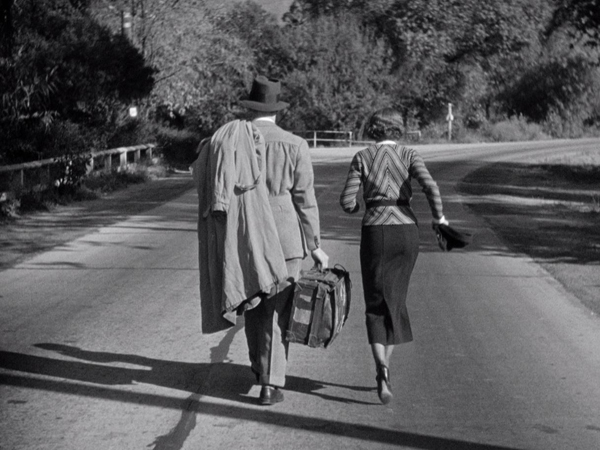
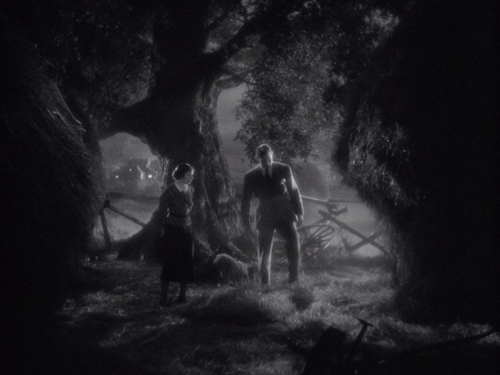
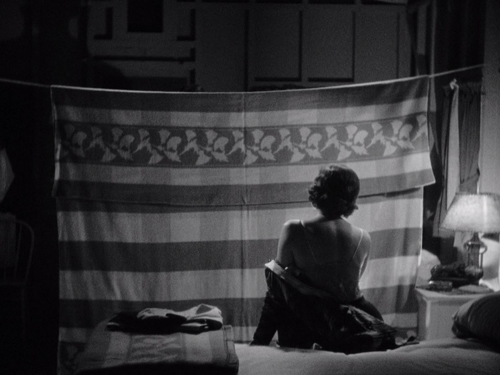
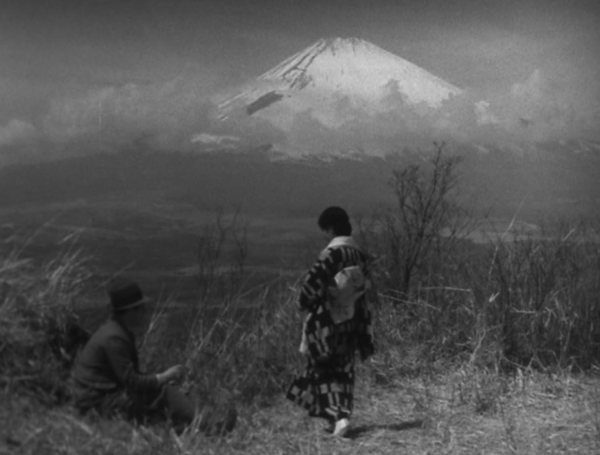
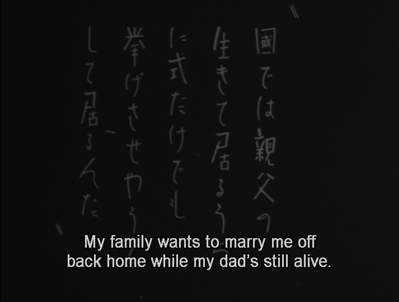
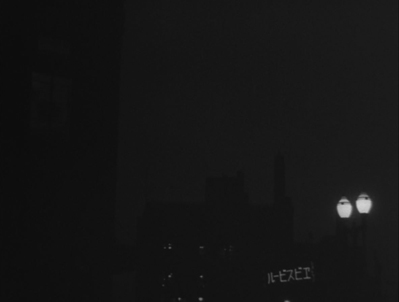 6
6